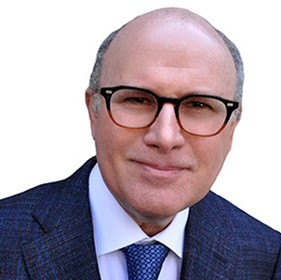Russia appears to be winning its war with the West, and the implications are profoundly negative for investors. But new ways to fight back are within reach.
The Central Bank of Russia (CRB) cut its key lending rate Friday by 150 basis points, marking the fourth rate cut since February when the war in Ukraine began.
CRB officials say Russian inflation is slowing as inflation in the West soars. That means one thing: You should consider buying energy.
Russia’s economic demise was supposed to be a done deal. Shuttering Western storefronts in Moscow, reeling in globetrotting oligarchs and waves of unprecedented global sanctions were supposed to suffocate the economy from the inside.
Russia was supposed to self-destruct and fall into the dustbin of economic modernity.
It’s not working outthat way so far:
- Today, interest rates inside Russia are back to pre-invasion levels.
- The ruble is the strongest fiat currency in the world vs the U.S. dollar, up 16% in 2022.
- And once-empty store shelves have been restocked.
More importantly, President Vladimir Putin is as popular as ever with Russians, according to a report by Bloomberg.
Despite this glimpse of hope, it’s not all sunshine and rainbows.
Western Companies March Out of Russia
Year to date, a tracker at Yale University highlights that almost 1,000 Western companies have now pulled out of the Russian economy.
Microsoft (MSFT) announced on Friday that it would lay off all of its 400 workers, and that new business in the country would be completely discontinued.
That’s a gigantic blow because the corporate world runs on Microsoft software both on the desktop and in its Azure intelligent cloud.
The inability to send and receive Word and Excel files is likely to be a big problem for Russian firms trying to compete on a world stage.
Also, inflation in Russia is still running at a 17.1% annualized clip, the highest since 2002 … so although it’s improving, it still has a long way to improve.
Related Post: A New War Is Already Here
The Wall Street Journal notes that the CRB is cognizant that the Russian economy still faces high hurdles. Diminished investment from the West and rising prices domestically will keep economic growth rates negative for the remainder of 2022 and next year.
Unfortunately for investors in the West, none of this will be enough to change the way Putin prosecutes the tragic, pointless war in Ukraine, a region that produces 25% of the world’s grain harvest.
He’s being emboldened by relative stability on the home front and Western governments that refuse to sanction Russian oil. Their inaction is putting upward pressure on agricultural commodities and energy prices as speculators bet the war will last well beyond the summer.
At the other end of the spectrum, the Federal Reserve is stuck. The U.S. central bank is fighting a war on inflation that is largely out of its control.
The economy is in trouble. This free video shows what we believe will happen next. Coming events WILL impact your money, but there are seven critical steps you can take to protect and swiftly build your wealth. Check this out now for all the details on your emergency plan for 2022.
The S&P 500 index plummeted 2.9% on Friday following a stronger-than-expected report on inflation at the consumer level. The Consumer Price Index (CPI) in May surged 8.5% on an annualized basis, the highest reading since 1981.
Investors fear the Fed will push short-term interest rates aggressively higher to squash economic growth and kill demand.
It’s a devilish economic twist: Russia starts a horrific war in Ukraine and ends up sabotaging Western economies all over the world.
Related Post: Hack Back Against Cyberattacks
There will be winners, though.
While energy stocks were lower on Friday with the rest of the market, energy has had a historically strong year.
The Energy Select Sector SPDR Fund (XLE) is a non-diversified exchanged-traded fund (ETF).
The XLE tracks the biggest oil, gas, consumable fuels and energy equipment businesses within the S&P 500. Among its holdings are Exxon Mobil (XOM), Chevron (CVX), EOG Resources (EOG) and ConocoPhillips (COP). Those four companies alone account for over 53% of the fund’s holdings … and last week, XOM hit an all-time high.
The ETF has a dividend yield of 2.5%, an expense ratio of just 0.1% and has rallied over 52% in the past six months.
The ETF is due for a minor pullback, yet the longer-term trend for energy is strongly positive.
Investors should take advantage of near-term weakness. It’s only a matter of time before shares resume their trek to new highs.
As always, remember to conduct your own due diligence before entering any trade.
Best wishes,
Jon D. Markman


